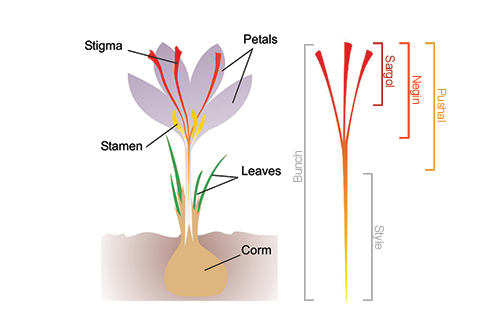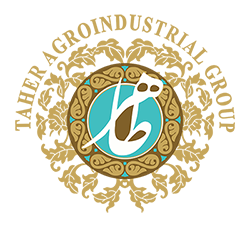
Saffron It’s a plant that is a couple of years old (Family Iridaceae) and it is known as red gold in the producing countries. This plant has several unique points such as the low need for water, good production time from farmers’ perspective (which is fall, winter and the beginning of spring), lots of employment and the main income of most farmers.
Where is the region of Saffron?
The background of Saffron agriculture goes back to 2500 years ago, this plant seems to be native to Greece and The Mediterranean region, but some believe that the first habitat of Saffron was at the mountain range of Zagros and to be more precise at the Alvand region in Iran.
But now the worlds biggest producers of this product are Iran, Spain, India, Greece, Azerbaijan, Morocco, and Australia.
With a yearly production of about 336 tons of Saffron and a cultivation area of about 105 thousand hectares, Iran is the biggest producer of this plant in the world which is about 90 percent of the world production. Iran’s Saffron covers almost all markets in the world either directly or indirectly. At this moment Saffron is cultivated in almost all parts of Iran (30 provinces).
When is Saffon harvested?
Saffron is planted in summer (August) -when the corm is at rest- on a soil where planting preparation has started in the previous autumn. Blooming begins in mid-October, after the first spathes emerged, and goes on for 15, 20 days
How the Saffron is processed?
Step1: In the harvesting time, pick the flowers at dawn while the flower is still closed, which is to be done manually by hand.
Step2: Separate the crimson stigmas from the flower. It should be done in 24 hours.
Step3: Dry the stigmas. For Drying, 55 °C is required for around one hour. 10 minutes or more as per the requisite is needed for cooling it down. (Saffron is dried with 80% of its moisture removed)
Step4: Store it in a glass container for around two years away from sunlight
Note: 170000 Flowers= 100 kg Flowers= 1Kg Dry Saffron
What are the types of Saffron?

– Super Negin:
The most expensive and rare trim of Saffron. Super Negin saffron is known not only for being the most potent but also for its aesthetically pleasing features. Super Negin threads are longer in length and contain no yellow or orange threads. The threads are cut symmetrically and contain no crumbs.
– Negin Saffron:
This is a special type of Saffron. Negin Saffron is the three strands of stigma part of Saffron without the cream. This is the most expensive type of Iranian Saffron; it also has the highest aroma and color with higher volume in compare of other types.
– Sargol Saffron:
This is the truly pure Saffron. In the Sargol Saffron, we get only the stigma part of the Saffron thread; therefore, the color and fragrance of this Saffron are the best and strongest among all other types. It has pure threads without style which is completely red.
– Poushal Saffron:
Poushal saffron is the cheapest and most commonly sold Saffron trim in stores. This type is the stigma part of the Saffron threads plus 1 to 3 mm of the cream part.
As a result, Poushal Saffron has a stronger color than Bunch Saffron.
– Bunch Saffron:
This is the main and base type of Saffron, in which we put together all parts of the Saffron thread.
In other words, bunch Saffron is a set of complete bunches of the Saffron threads.
– White Saffron:
There is white Saffron, which is, in fact, the white root of the Saffron thread. So, this Saffron is known as white or style Saffron in the market.






User comments